17 Celebrities Who Got Into an Awkward Situation Because of Their Evening Dresses

Thick fog is rising over the ocean as the sun is slowly sinking towards the horizon. It’s hard to see farther away than a few dozen feet, but that’s enough to notice a hulking, skeletal shape in the distance. As your ship approaches the figure, your heart beats faster, and then you make out the details of another vessel — abandoned, by the looks of it.
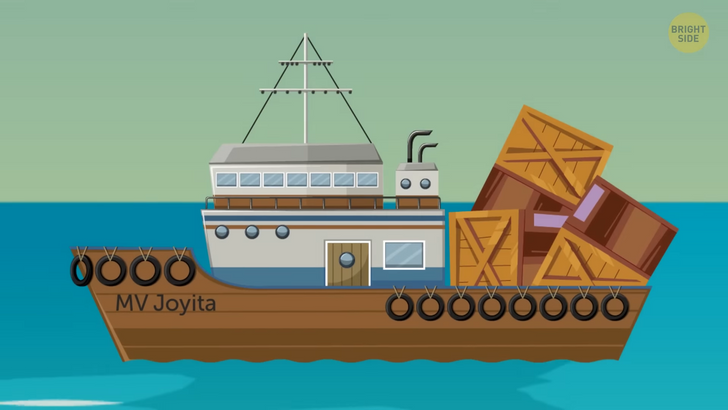
Ghost ships do exist, and their mysteries aren’t always solved. Take MV Joyita, for example. It was a wooden vessel built in 1931 as a luxury yacht. It had served well to various people for over 20 years before it was bought by a Samoan sailor and became a merchant ship. In 1955, though, Joyita’s service came to an abrupt and mysterious end. On October 3, it set sail for another trading voyage that should’ve taken no more than 48 hours. Delays happen in the sea, so when Joyita didn’t arrive on October 5 as scheduled, there was little worry yet. But then it failed to come on the following day too. There was no distress signal or any other sign of Joyita’s presence anywhere between its departure and arrival points. A search and rescue party was dispatched to find the ship, and for six days, they were scouting the area of nearly 100,000 square miles. On October 12, the mission returned to the base empty-handed. Joyita vanished without a trace.
It was only a month later that another merchant ship, Tuvalu, noticed the missing vessel far away from its route, drifting in the open sea and listing heavily. The sailors boarded the ship and found that all of its crew and passengers, 25 people total, were missing along with all the cargo the vessel had been carrying. The radio was tuned to the international distress channel, meaning that the crew had been trying to ask for help. But they couldn’t reach anyone because the radio cable had been damaged, limiting the range to 2 miles. The lifeboats were missing as well, indicating that people on board must have left the ship. Unfortunately, they seemed to have taken the logbook with them, leaving the rescue team clueless as to what had happened. Even today, the mystery of MV Joyita hasn’t been solved yet. No one knows where the crew and passengers had gone and what had caused them to leave.
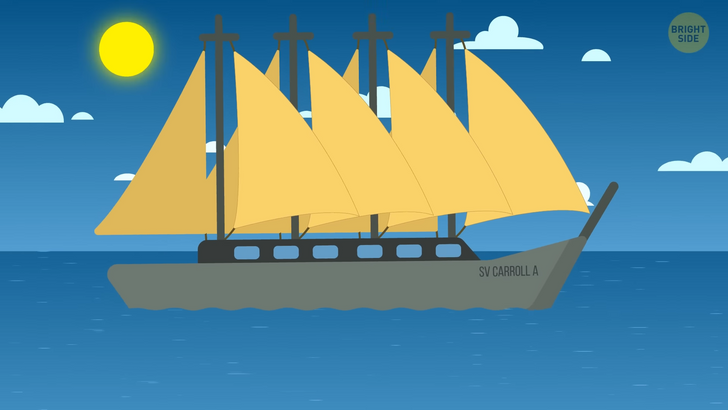
SV Carroll A. Deering wasn’t a ghost ship in the usual sense of the word — there were no sightings of it in the open sea. Instead, it was found on the shore, but the circumstances of it running aground are a puzzle shrouded in mystery. Carroll A. Deering was built in 1919 in Maine, and it was a large vessel made for commercial voyages. Unfortunately, despite its large cost of construction, it had only served for a year before its last trip. July 19, 1920. The ship was traveling from Puerto Rico to Rio de Janeiro via Newport News to deliver a cargo of coal. It was almost halfway to the final destination when the captain fell seriously ill, and the crew turned back to drop him and his son off and replace the captain.
The voyage went without incident, but when it came to Barbados in December to resupply, there were strange moods among the crew: the first mate didn’t seem to be happy with the new captain. No one paid much attention to it back then, when they probably should have. The last sighting of Carroll A. Deering at seas was on January 28, 1921, when a lightship noticed it off the coast of North Carolina. There was some commotion on the quarterdeck of the ship, where the crew were normally not allowed. Then, another vessel sighted it, but there was already no one on the decks.
On January 31, the merchant ship was found hard aground in the Diamond Shoals — a site notorious for numerous shipwrecks that had been occurring there for centuries. When the search and rescue party boarded the ship, they found it abandoned, the log and personal belongings of the crew gone, along with the two lifeboats. There is still no answer to what happened on board of Carroll A. Deering that January, although the most popular version was mutiny. Maybe we’ll never find out the truth, though.
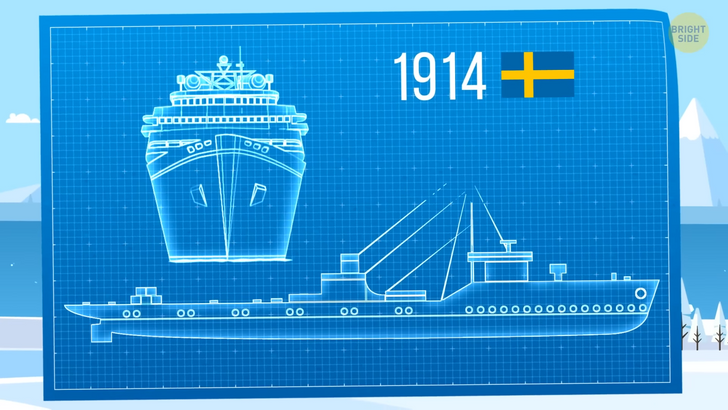
SS Baychimo is perhaps one of the most notable ghost ships in history. This large cargo steamer was built in 1914 in Sweden and plodded its way dutifully for over 16 years, trading provisions for pelts with native tribes of Alaska and Canada.
But then, on October 1, 1931, Baychimo got caught in pack ice. At first, it seemed the crew would be able to wait it out and continue on their route because the ship broke free in a couple of days. But in less than a week, it became caught again, this time for good. In another week, a rescue party was sent to fetch 22 of the Baychimo’s crew, while another 15 remained behind to wait through the winter if necessary and get the ship back. But a month later, after a powerful blizzard struck their camp, the sailors went out of their shelters only to find the ship gone. Luckily, a few days later, a native hunter told them Baychimo hadn’t been lost yet: he’d seen it about 45 miles from where they had been stationed. They managed to track it down but decided the ship wouldn’t survive the winter, so they took the most valuable cargo from its hold and abandoned it.
They were wrong, though. SS Baychimo did survive that winter, and many more that followed. When the ice broke, it sailed away on its own, drifting listlessly along the shores of Canada and Alaska. There were numerous sightings of the ghost ship, sometimes adrift in the open sea, and at other times stuck in the pack ice again. People attempted to board and salvage it, but weather conditions or lack of equipment always prevented them. SS Baychimo was last sighted by native Alaskans in 1969, 38 years after its abandonment. What became of it later remains unknown.
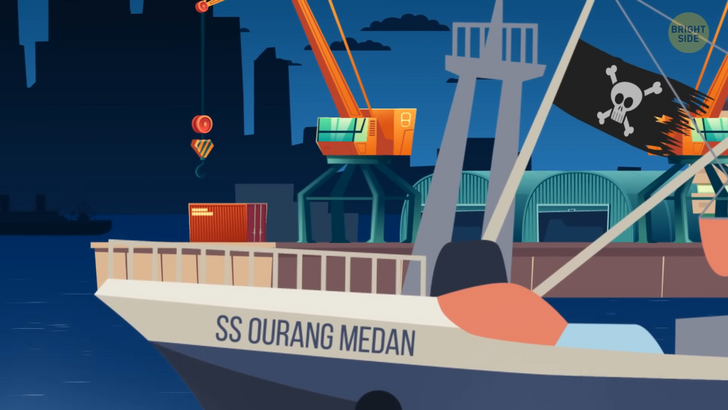
The story of SS Ourang Medan is one of the most puzzling and harrowing ghost ship stories of the 20th century. No one even knows for sure if the ship even existed in the first place. It wasn’t recorded in Lloyd’s Shipping, the international register of ships, which makes it either a tall tale or a vessel that avoided being officially registered for some shady reasons. In any case, the accounts of what happened to Medan vary. According to most reports, it was carrying some unknown cargo in Indonesian waters when a distress call was received by another ship in the vicinity. The officer on duty heard an SOS message, but its contents are different depending on the account.
The message did not repeat, and the crew of Medan didn’t answer any attempts to contact it back. The ship that received the distress call hurried to the rescue, but they only reached the vessel the following day, when it was already drifting and slightly listing. When the rescuers boarded the ship, they found that none of the crew survived. However, one lifeboat was missing, which implied there was at least one crew member who managed to escape. What happened to the rest of the people on board remains a mystery to this day. Still, there are no hard facts about this story, so we might never find out whether SS Ourang Medan was an actual ship and not a thing of fiction.
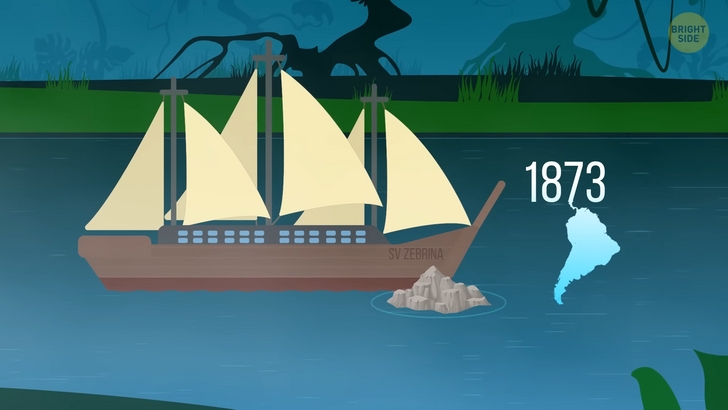
SV Zebrina was a three-mast sailing barge built in 1873 for river trade trips in South America. She served for well over four decades, proving to be a sturdy and reliable ship. It was later transferred to Europe, where it continued serving its purpose well. But then, in October 1917, Zebrina set sail to a regular voyage only to be found ashore several days later. Mysteriously, although the ship was perfectly intact, the entire crew of five and the captain were gone. There is no direct evidence or hard facts as to what really happened that day. The most convincing theory is that the crew were washed away from the deck because of an underwater explosion, and then the ship sailed ahead without them. But the truth, as always, remains unknown.











